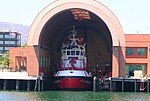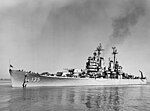Liberty Hill site

Liberty Hill site in San Pedro, Los Angeles, California was the site of the 1923 strike by the Marine Transport Workers Industrial Union 510 a part of the Industrial Workers of the World (IWW). The strike was called to draw attention to the worker's low wages and poor working conditions. It was also to draw attention to some union activists that had been arrested and lockup for violating the California Criminal Syndicalism Act passed on April 30, 1919, by Governor William Stephens, which criminalized syndicalism. The strike tied up 90 ships in Port of Los Angeles San Pedro. The Liberty Hill site was designated a California Historic Landmark (No. 1021) on March 3, 1997.On May 15, 1923, writer Upton Sinclair spoke to approximately 3,000 striking longshoremen at Liberty Hill. Sinclair used street theater to highlight ongoing suppression of freedom of speech by the LAPD, Sinclair began his address by reading the Bill of Rights. Within moments, he was arrested. The strike did not achieve its goal, but did start a movement that found success in the 1930s, the Congress of Industrial Organizations. The California Criminal Syndicalism Act was found unconstitutional in 1968. The Liberty Hill Foundation was started in 1976, it name was given from the 1923 Liberty Hill event. "
Excerpt from the Wikipedia article Liberty Hill site (License: CC BY-SA 3.0, Authors, Images).Liberty Hill site
West 5th Street, Los Angeles San Pedro
Geographical coordinates (GPS) Address Nearby Places Show on map
Geographical coordinates (GPS)
| Latitude | Longitude |
|---|---|
| N 33.740685 ° | E -118.280563 ° |
Address
West 5th Street
90731 Los Angeles, San Pedro
California, United States
Open on Google Maps








